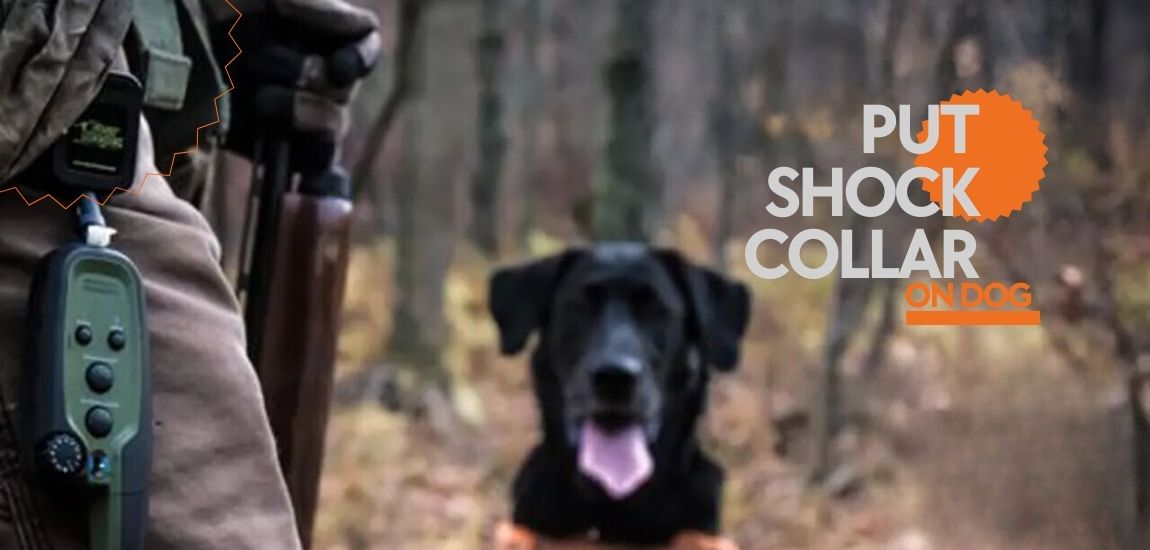Shock collars, also known as electronic collars, are training devices that use mild electrical stimulation to deter unwanted behaviors in dogs. While they can be effective in certain situations, it’s crucial to use them responsibly and with caution. This guide will provide a step-by-step process on how to properly put a shock collar on your dog, ensuring their safety and well-being.
Step-by-Step Instructions For Shock Collar on a Dog
Materials you’ll need:
- Shock collar
- Collar receiver
- Collar strap
- Screwdriver (if necessary)
1. Choose the Correct Collar Size:
- Measure your dog’s neck circumference at the widest point, just below the jawline.
- Add 2-3 inches to the measurement to determine the appropriate collar size.
- The collar should fit snugly but not too tightly. You should be able to fit two fingers between the collar and your dog’s neck.
2. Attach the Collar Receiver:
- The collar receiver is the part of the shock collar that houses the electronics and battery.
- Slide the receiver onto the collar strap, making sure it is centered and secure.
- Most receivers have a locking mechanism to prevent them from falling off.
3. Adjust the Collar Strap:
- Put the collar on your dog and adjust the strap until it fits comfortably.
- The collar should be snug but not constricting. You should be able to fit two fingers between the collar and your dog’s neck.
- If the collar is too loose, it may move around and cause discomfort or interfere with the shock feature.
4. Test the Collar:
- Before using the shock feature on your dog, test the collar on yourself to ensure it is working properly.
- Set the stimulation level to the lowest setting and activate it. You should feel a mild tingling sensation.
- If you do not feel anything, check the battery and connections to make sure everything is working correctly.
5. Introduce the Collar to Your Dog:
- Place the collar on your dog for short periods initially, gradually increasing the duration as they become accustomed to it.
- Allow them to wear the collar without activating the shock feature.
- This will help them get used to the feel and weight of the collar.
6. Start Training:
- Once your dog is comfortable with the collar, start using the shock feature only for specific unwanted behaviors, such as excessive barking or jumping up on people.
- Begin with the lowest stimulation level and gradually increase it as needed.
- It is important to use the shock feature sparingly and only when necessary.
7. Reward Positive Behavior:
- When your dog responds appropriately to the shock collar, reward them with treats, praise, or play.
- This will help them associate the desired behavior with positive outcomes.
- Positive reinforcement is more effective than punishment in the long run.
Precautions and Considerations
- Never use a shock collar on puppies under 6 months old.
- Do not use the shock feature excessively or for extended periods.
- Monitor your dog’s behavior closely while using a shock collar.
- Seek professional training if you encounter any difficulties or concerns.
- Consider alternative training methods, such as positive reinforcement or clicker training.
Conclusion About Shock Collar on a Dog
Shock collars can be a valuable training tool when used responsibly and in conjunction with other positive reinforcement techniques. By following these instructions, you can ensure that you put the shock collar on your dog correctly and use it effectively to address specific behavioral issues. Always prioritize your dog’s safety and well-being, and consult with a veterinarian or professional trainer if you have any questions or concerns.
FAQs About Shock Collar on a Dog
1. Is it cruel to use a shock collar on a dog?
Shock collars can be controversial, but when used properly and responsibly, they are not inherently cruel. However, it’s important to avoid excessive or inappropriate use that could cause harm or distress to your dog.
2. What is the best shock collar for dogs?
The best shock collar depends on your dog’s individual needs and temperament. Consider factors such as size, training level, and the specific behaviors you need to address. Research different brands and models to find one that is reliable, adjustable, and safe for your pet.
3. How long can a dog wear a shock collar?
Dogs should not wear a shock collar for extended periods. Limit use to specific training sessions and remove the collar when not in use. Prolonged wear can cause discomfort or skin irritation.
4. Can I use a shock collar to stop my dog from barking?
Shock collars can be effective in reducing excessive barking, but they should not be used as the sole solution. Combine the use of a shock collar with positive reinforcement and other training techniques to address the underlying cause of the barking.
5. What are the alternatives to shock collars?
There are several alternative training methods available, such as positive reinforcement, clicker training, and behavioral modification. These methods focus on rewarding desired behaviors rather than punishing unwanted ones.


